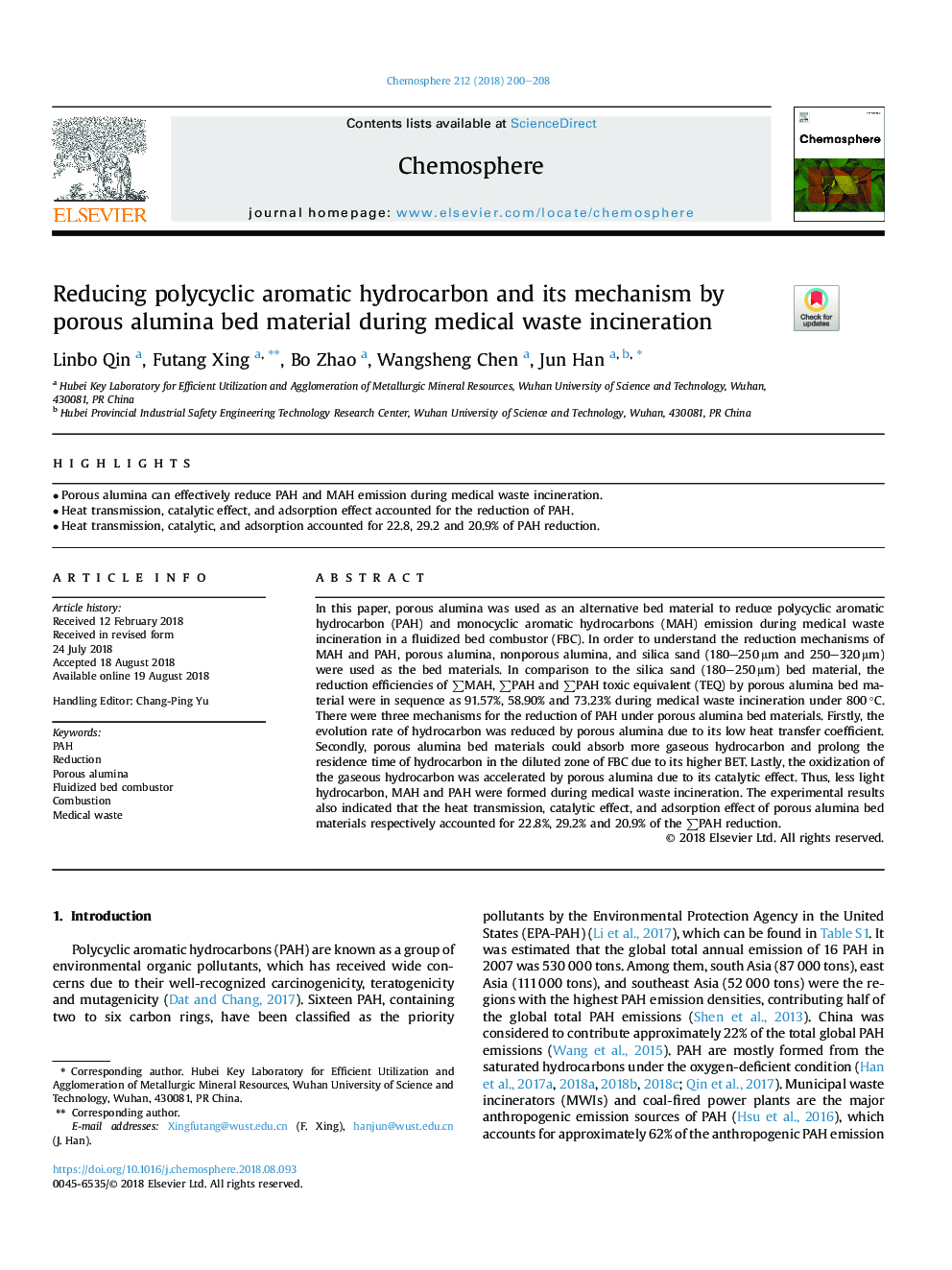| Article ID | Journal | Published Year | Pages | File Type |
|---|---|---|---|---|
| 8946127 | Chemosphere | 2018 | 9 Pages |
Abstract
In this paper, porous alumina was used as an alternative bed material to reduce polycyclic aromatic hydrocarbon (PAH) and monocyclic aromatic hydrocarbons (MAH) emission during medical waste incineration in a fluidized bed combustor (FBC). In order to understand the reduction mechanisms of MAH and PAH, porous alumina, nonporous alumina, and silica sand (180-250â¯Î¼m and 250-320â¯Î¼m) were used as the bed materials. In comparison to the silica sand (180-250â¯Î¼m) bed material, the reduction efficiencies of âMAH, âPAH and âPAH toxic equivalent (TEQ) by porous alumina bed material were in sequence as 91.57%, 58.90% and 73.23% during medical waste incineration under 800â¯Â°C. There were three mechanisms for the reduction of PAH under porous alumina bed materials. Firstly, the evolution rate of hydrocarbon was reduced by porous alumina due to its low heat transfer coefficient. Secondly, porous alumina bed materials could absorb more gaseous hydrocarbon and prolong the residence time of hydrocarbon in the diluted zone of FBC due to its higher BET. Lastly, the oxidization of the gaseous hydrocarbon was accelerated by porous alumina due to its catalytic effect. Thus, less light hydrocarbon, MAH and PAH were formed during medical waste incineration. The experimental results also indicated that the heat transmission, catalytic effect, and adsorption effect of porous alumina bed materials respectively accounted for 22.8%, 29.2% and 20.9% of the âPAH reduction.
Related Topics
Life Sciences
Environmental Science
Environmental Chemistry
Authors
Linbo Qin, Futang Xing, Bo Zhao, Wangsheng Chen, Jun Han,
